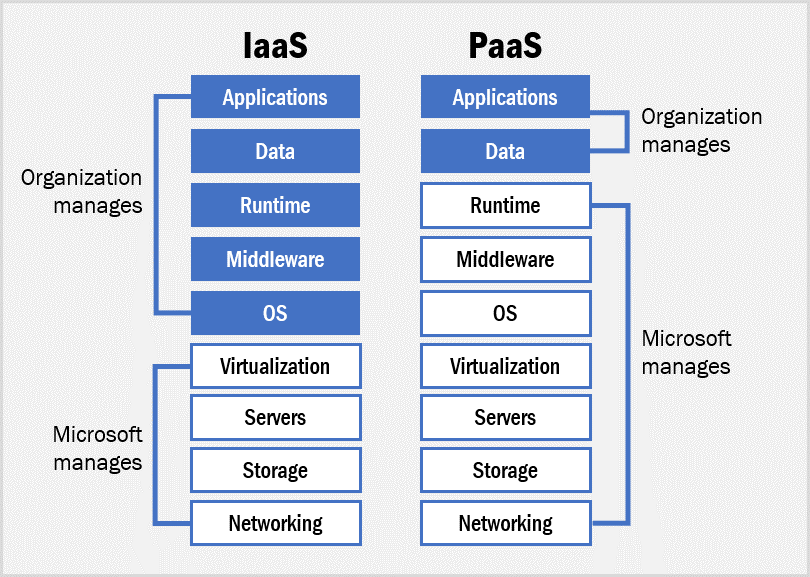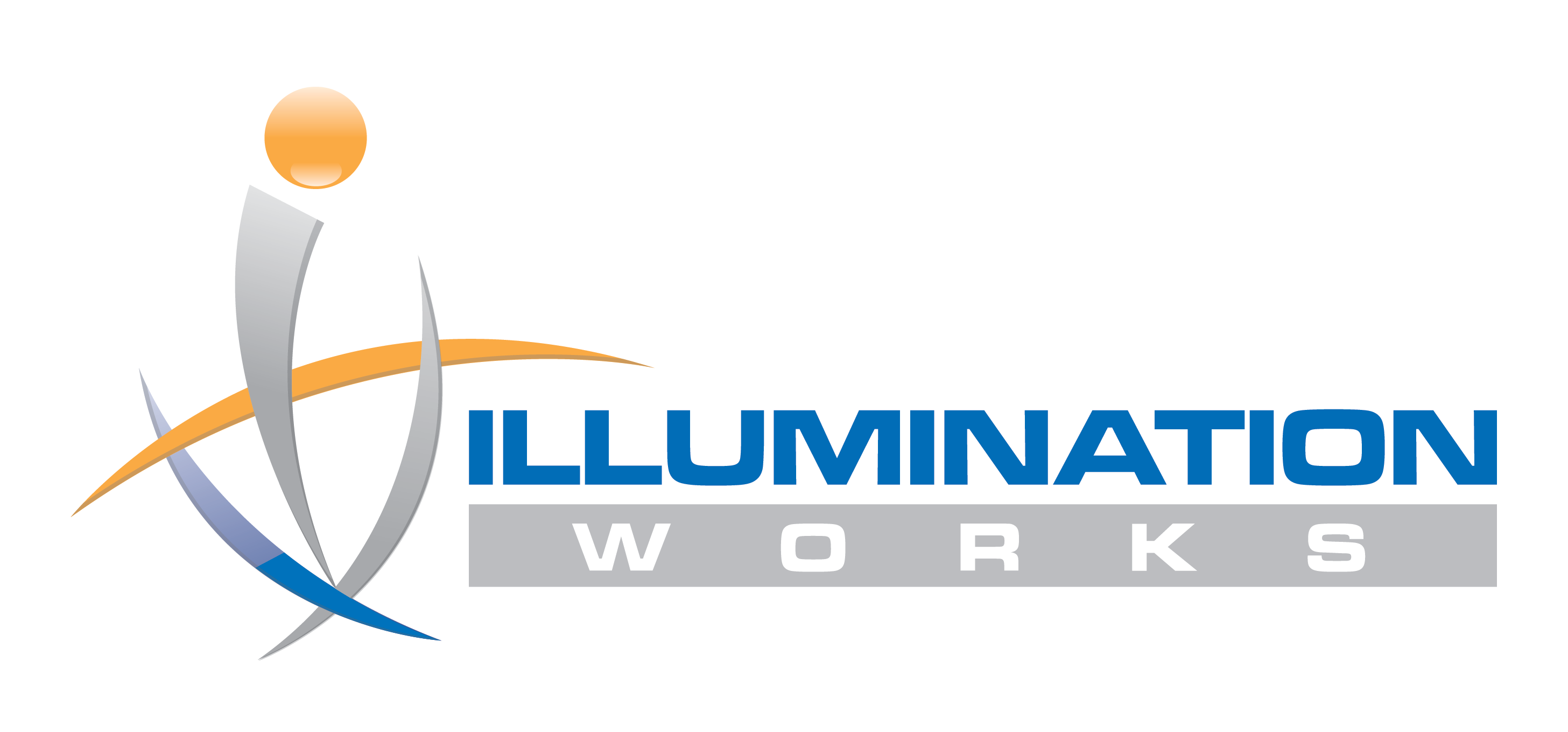The best “as a service” approach depends on your infrastructure, the number of IT resources you have, the budget you can afford, the complexity of your systems, and your security requirements.
 The most common cloud service models are information as a service (IaaS) and platform as a service (PaaS). To delve deeper into this topic, we sat down with Oleg Semenov, Illumination Works’ lead Microsoft Azure certified architect, to learn more based on his latest successful experience of an Azure PaaS implementation with one of our Air Force customers.
The most common cloud service models are information as a service (IaaS) and platform as a service (PaaS). To delve deeper into this topic, we sat down with Oleg Semenov, Illumination Works’ lead Microsoft Azure certified architect, to learn more based on his latest successful experience of an Azure PaaS implementation with one of our Air Force customers.
Can you start by telling us a little bit about why you are a fan of PaaS?
The approach for PaaS can be applied to Azure Cloud, Amazon Web Services (AWS) Cloud, and Google Cloud. Regardless of which provider you choose, if you know how to exploit and take advantage of the offerings that platform as a service provides, then at the most fundamental level you’re making your architecture simpler. Your operations will be a smaller size in terms of time, effort, and cost. In addition, you will benefit from quick time to market and fast time to actually do the useful thing that you want it to do in the first place. PaaS minimizes the need to continuously be configuring and maintaining your servers because the provider does that for you, freeing up your resources to focus on more useful tasks, and that’s really what it’s all about.
What are determining factors you’ve seen when selecting PaaS vs IaaS?
![]() A good example is the enterprise application integration project we are currently working with the Air Force. On this project, the data is exchanged with different partners, being received in different formats, and involves taking those feeds and aggregating, processing, and storing the data, and then giving information to other trading partners. When ILW started work on the project, the Air Force had already been directed to modernize their supply planning services and required assistance developing an Azure platform solution to gain long-term savings. The project had made minimal progress towards implementing a cloud-based solution leveraging Microsoft Azure. They were at a point where they needed to get things integrated and working well very quickly.
A good example is the enterprise application integration project we are currently working with the Air Force. On this project, the data is exchanged with different partners, being received in different formats, and involves taking those feeds and aggregating, processing, and storing the data, and then giving information to other trading partners. When ILW started work on the project, the Air Force had already been directed to modernize their supply planning services and required assistance developing an Azure platform solution to gain long-term savings. The project had made minimal progress towards implementing a cloud-based solution leveraging Microsoft Azure. They were at a point where they needed to get things integrated and working well very quickly.
The first thing we did was help the Air Force identify the best cloud service model for their specific situation and requirements. We compared the infrastructure options and benefits of IaaS and PaaS based on nine groupings (see picture). To implement IaaS, five of the nine technical areas would have to still be managed by the Air Force (applications, data, runtime, middleware, operating system), with only four managed by the solution provider (servers, storage, networking, virtualization). Whereas, if PaaS was implemented, only two would need to be managed by the Air Force (application, data), and the provider would take on the burden of managing seven areas (servers, storage, networking, virtualization, operating system, middleware, and runtime).

Given the complexity of the systems involved, the security requirements, and the need to implement quickly, we recommended PaaS as the most cost efficient, simplest, fastest, and least human-involved approach, which meant the Air Force would only manage their data and their applications, allowing them to focus on more important tasks than patching servers and other on-going and time-consuming platform activities.
Can you share more about the PaaS implementation with the Air Force?
 Illumination Works designed and implemented a cloud-native Azure PaaS solution for the Air Force and is continuing to support consequent releases. Our team converted intake requirements into suitable data structures for storage, developed a process for reporting metrics for data ingestion streams, and simplified the overall architecture, all in four months’ time.
Illumination Works designed and implemented a cloud-native Azure PaaS solution for the Air Force and is continuing to support consequent releases. Our team converted intake requirements into suitable data structures for storage, developed a process for reporting metrics for data ingestion streams, and simplified the overall architecture, all in four months’ time.
Technically speaking, we used BitBucket, Artifactory, and MS Team Foundation Server for automated continuous integration/continuous delivery (CI/CD) and DevSecOps, and in terms of Azure, we leveraged: Azure Data Factory and Azure SSIS for enterprise level ETL/ELT data ingest, transform, and prep; Azure Functions for PaaS micro services; Azure SQL for DB as a Service relational data store; and Azure API management for PaaS integration, app gateway, and request mediation services.
More importantly, the customer has been pleased with the quick implementation and the benefits gained with the PaaS service offering:
- Minimized maintenance and support overhead
- Decreased time to market compared to traditional and IaaS-based implementations
- Consumption-based cost model for cost efficient utilization of cloud resources
- Quicker time to market deliveries with lower support and maintenance overhead demands
Why do you think some organizations choose to continue to create VMs and configure their own systems?
Implementing PaaS to take advantage of its offerings requires skills that some organizations might not have internally. To successfully implement PaaS you need to have a broad and deep knowledge of the environment, whether it is Azure or AWS, or any other cloud offering. You need to understand the intricacies of the PaaS services, their capabilities, constraints, and dependencies. You also need to take into account security, availability, performance, and other requirements for these PaaS services with respective implications for the architecture. Last, it is important to know how to leverage PaaS and compose an effective solution out of those services that meet organization’s requirements, while fully taking advantage of the benefits.
Tell us a little more about ILW’s cloud migration services.
 Illumination Works prides itself on being technology agnostic and is able to bring our customers the right resources with the right certifications and the right skills to help organizations fully embrace the benefits of any “as a service” offering, including PaaS and IaaS, leveraging any cloud service provider. Whether it’s Azure, AWS, or Google Cloud, we have the right skills to understand how to take advantage of the services so you can implement the simplest architecture needed to meet your goals and deliver solutions quicker.
Illumination Works prides itself on being technology agnostic and is able to bring our customers the right resources with the right certifications and the right skills to help organizations fully embrace the benefits of any “as a service” offering, including PaaS and IaaS, leveraging any cloud service provider. Whether it’s Azure, AWS, or Google Cloud, we have the right skills to understand how to take advantage of the services so you can implement the simplest architecture needed to meet your goals and deliver solutions quicker.
With our certified resources, we bring customers the latest and greatest cloud offerings, which also lend themselves easily to higher degrees of automation. We work to automate everything to such a degree that it can be packaged and presented in a way that customers can rent a service (PaaS). Everything is taken care of, you just pay and receive a known amount, known scope, known functionality, and that’s that – in the end, freeing up resources to do other more valuable activities to support the actual business needs. Our solutions are cost-effective throughout the entire solution delivery experience and include flexible migration options with hybrid support.
About Oleg
 Oleg Semenov is a cutting-edge technologist with years of experience delivering quality by design. He specializes in design, implementation, and delivery of cloud-based solutions, artificial intelligence, machine learning, and analytics. He is a Microsoft certified ‘Azure Solutions Architect Expert’ in Cloud Platform and Infrastructure and views himself as an advocate for his client in both the marketplace and technology. He brings his expertise and experience to each customer to deliver effective solutions to improve and grow their business.
Oleg Semenov is a cutting-edge technologist with years of experience delivering quality by design. He specializes in design, implementation, and delivery of cloud-based solutions, artificial intelligence, machine learning, and analytics. He is a Microsoft certified ‘Azure Solutions Architect Expert’ in Cloud Platform and Infrastructure and views himself as an advocate for his client in both the marketplace and technology. He brings his expertise and experience to each customer to deliver effective solutions to improve and grow their business.

